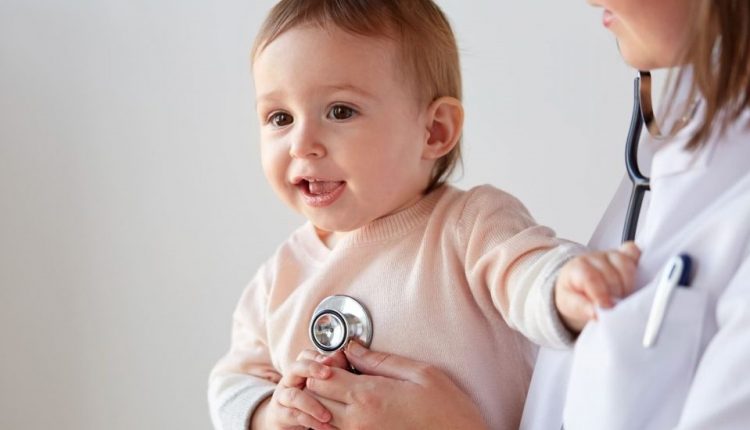
Paediatric arrhythmias: what they are, how to treat them
Paediatric heart diseases: arrhythmias are changes in the rhythm of the heart and can affect the intensity or duration of the heartbeat
Paediatric arrhythmias, rhythm changes can be:
- Natural, i.e. due to age or daily activities (sport, fever, stressful or highly emotional situations);
- Pathological, requiring therapy and treatment as they are dangerous to health.
Arrhythmias present themselves as tachycardias, i.e. acceleration of the heartbeat, or bradyarrhythmias involving decelerations of the heart rhythm.
CHILD HEALTH: LEARN MORE ABOUT MEDICHILD BY VISITING THE BOOTH AT EMERGENCY EXPO
In both cases, arrhythmias can be symptomatic or asymptomatic in nature.
Some arrhythmias are benign, such as tachycardias and sinus arrhythmias, which accompany everyday activities.
Pathologies of the paediatric heart, many arrhythmias can be dangerous and among these we can distinguish:
- Primary arrhythmias, which are due to an inherent defect in the heart’s electrical activity;
- Secondary arrhythmias, which can develop after cardiac surgery;
- Genetic arrhythmias;
- Arrhythmias due to specific pharmacological or physical alteration (e.g. therapies, drugs, febrile states).
The main tool for diagnosing an arrhythmia is the electrocardiogram, which records the heart’s electrical activity and can be time-dependent during a cardiologist’s examination.
Tachycardias are characterised by a sudden increase in the rhythm of the heart that can last from a few seconds to several hours and stop more or less abruptly.
The two main types of tachycardia are ventricular, which involves the ventricles, or supraventricular, which involves both the atria and ventricles, the two cavities in the heart.
Tachycardias can degenerate into fibrillation, i.e. an extreme increase in rhythm, to the point of interrupting the heart’s electrical activity.
Therapeutic treatments are more or less invasive depending on the characteristics of the tachycardias.
They range from vagal interruption manoeuvres to pharmacological or interventional therapy (transcatheter ablation).
Tachyarrhythmias at risk of malignant events belong to two families:
- Wolff-Parkinson-White (WPW) syndrome caused by the presence of abnormal cardiac conduction pathways capable of triggering fast tachycardias up to cardiac arrest;
- The channelopathies or genetic arrhythmias (Long QT and Short QT Syndrome, Brugada Syndrome, Catecholaminergic Polymorphic Ventricular Tachycardia) abnormalities due to genetic mutations in heart cells that can cause tachycardias and cardiac arrest.
Bradycardias are less frequent than tachycardias and are caused by a malfunction of the atrial sinus node and atrioventricular node, the two organs responsible for controlling heart rate.
Bradycardia can degenerate into cardiac arrest, so the therapeutic treatment for the most severe bradycardias may be the implantation of a pacemaker that allows artificial control of the heart rhythm.
Among the bradycardias most at risk of malignant events is complete atrioventricular blockade, i.e. a blockage of the transmission of the electrical signal from the atria, the upper chambers from which the cardiac impulse originates, to the ventricles, the lower chambers of the heart that are not capable of their own rhythm.
When a complete atrioventricular block occurs, which may be genetic in origin or arise with growth, the ventricles slow down their usual rhythm considerably and, in the most severe cases, come to a halt in their activity.
Read Also:
Emergency Live Even More…Live: Download The New Free App Of Your Newspaper For IOS And Android
Pathologies Of The Left Ventricle: Dilated Cardiomyopathy
Arrhythmogenic Cardiomyopathy: What It Is And What It Entails
Myocardial Infarction: Causes, Symptoms And Risk Factors
Dilated Cardiomyopathy: What It Is, What Causes It And How It Is Treated
Heart Disease: What Is Cardiomyopathy?
Inflammations Of The Heart: Myocarditis, Infective Endocarditis And Pericarditis
Heart Murmurs: What It Is And When To Be Concerned
Broken Heart Syndrome Is On The Rise: We Know Takotsubo Cardiomyopathy
Cardiomyopathies: What They Are And What Are The Treatments
Alcoholic And Arrhythmogenic Right Ventricular Cardiomyopathy
Difference Between Spontaneous, Electrical And Pharmacological Cardioversion
Heart Failure: Symptoms And Possible Treatments
What Is Heart Failure And How Can It Be Recognised?
Heart: What Is A Heart Attack And How Do We Intervene?
Heart Attack Symptoms: What To Do In An Emergency, The Role Of CPR
Bradyarrhythmias: What They Are, How To Diagnose Them And How To Treat Them



